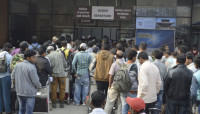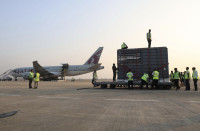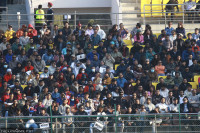Columns
History of women lawmakers
To ensure women’s rights, their presence is necessary in Parliament and the law-making process.
Khim Lal Devkota
Nepali women were deprived of their political, social and economic rights till the 1950s. In an effort to make women politically and socially conscious, several activists got together and established an organisation named Adarsh Mahila Samaj in 1946. In 1947, the Nepal Women Federation was formed in Kathmandu under the chairmanship of Mangala Devi Singh to fight injustice, exploitation and inequality and undesirable social practices child marriage and polygamy. The federation also championed voting rights for women. Led by Singh, members of the federation including Sahana Pradhan, Sadhana Pradhan Adhikari, Kanaklata Shrestha, Snehalata Shrestha and other women marched in procession to the then prime minister Mohan Shamsher Rana and presented a memorandum demanding that women be allowed to participate in the municipal election proposed to be held in 1951. Subsequently, Nepal held its first municipal election in 1953, and Adhikari was elected a member of Kathmandu Municipality.
Parliament is the highest representative body of the country which formulates laws. To ensure women’s rights, their presence is necessary in Parliament and the law-making process. Parliamentary elections were held for the first time in Nepal in 1959. Dwarika Devi Thakurani was the sole woman elected to the House of Representatives. She was appointed Deputy Minister of Health and Self-Governance, becoming the first woman minister in the history of Nepal. Among the 145 Members of Parliament in 1959, the only other woman was Kamal Rana who was nominated to the Upper House by the king. As per the book entitled Women’s Participation in Parliament published by the Parliament Secretariat in 2017, two and three women were elected respectively in the 1981 and 1986 elections to the 140-member Rastriya Panchayat. Following the reinstatement of multiparty democracy, three elections to the House of Representatives have been held in 1991, 1994 and 1999 under the constitution of 1990. In these elections, eight, seven and 12 women members were elected, respectively.
Constituent Assembly
As per Article 63 (5), at least one-third of the candidates under the proportional representation system should be women. The first Constituent Assembly election was held on April 10, 2008 which elected 197 women members. Among them, 30 were elected under the FPTP electoral system, 161 were elected under the proportional electoral system, and six were nominated by the Council of Ministers. The second Constituent Assembly election was held on November 19, 2013 in which 176 women were elected, making up 29.28 percent of the total 601 members.
Article 83 of the 2015 Constitution provides for a federal Parliament consisting of 334 members with two houses, namely the House of Representatives and the National Assembly with 275 and 59 members respectively. Among the 275 members in the House, 165 come from the FPTP electoral system, and the remaining 110 come through the proportional electoral system. Out of 59 members in the National Assembly, 56 come from an electoral college composed of provincial parliamentary members and chiefs and deputy chiefs of local governments. The President nominates the remaining three members as per the recommendation of the government.
There is a provision in the constitution that at least one-third of the representatives under the proportional electoral system should be women if the required minimum number is not fulfilled under the first-past-the-post electoral system. It is stipulated in Article 84 (8) of the constitution that at least one-third of the total number of members elected by each political party represented in the federal Parliament should be women.
Federal Parliament
The election to the federal Parliament was held in November-December 2017. A total of 90 women were elected to the House, six under the FPTP electoral system, and the remaining 84 on the proportional electoral basis. In terms of percentage, it comes to 32.73 percent. In the National Assembly, the total number of women representatives was 22 (37.29 percent). Among the total 334 members in the federal Parliament, there were 112 women. In terms of percentage, it comes to 33.53 percent. After the completion of the five-year term of the federal Parliament, the second election was held on November 20, 2022. In this election, nine women were elected through the FPTP electoral system and 81 were elected through the proportional electoral basis. Altogether, there are 91 women, or 33 percent of the total 275 members. There are 22 women members in the National Assembly, or 37 percent of the total number of 59.
Reviewing the 75-year-long history of the women’s movement in Nepal, we see that a lot of progress has been made in terms of representation. The level of representation of women in Parliament is better than in many countries like India, China and the United States. But qualitatively, there is a lot of work to be done on women’s rights.




 13.12°C Kathmandu
13.12°C Kathmandu













%20(1).jpg&w=300&height=200)

